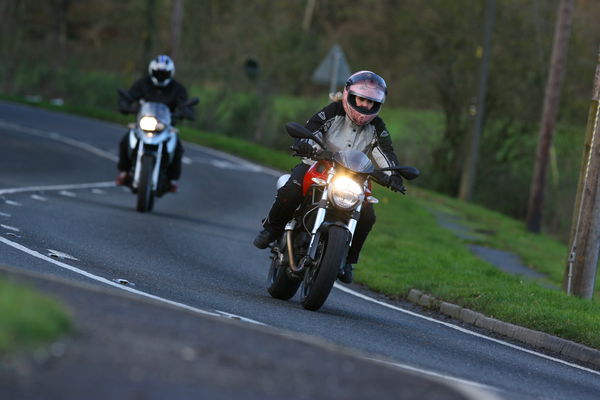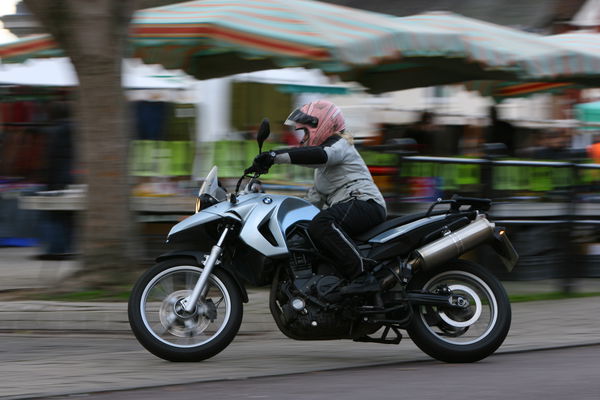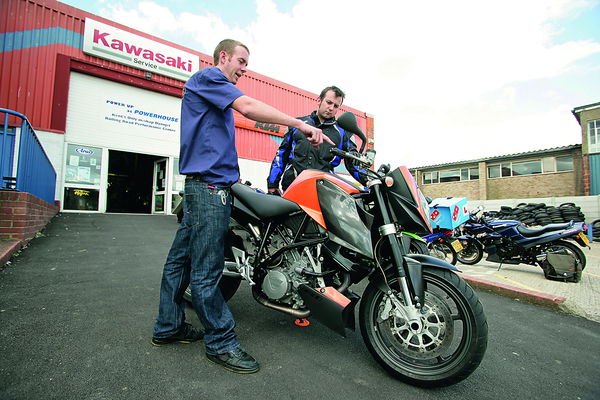The A2 test: What’s involved?
The test can look complicated: Module 1? Theory? Power limits? The days of just riding around the block are long gone but our guide will simplify the complexities


IF YOU took your bike test a few years ago you probably remember that a chap stood at the side of the road and asked you to go round the block. He’d then jump out (usually at a very safe distance, since his own neck was on the line) to see if you could do an emergency stop.
And that was about it. OK, maybe he’d follow you on another bike for a while, and ask you to turn in the road (without putting your feet down – and it was probably the last time you did that particular manoeuvre…)
Today it’s a bit different. Even getting an A2 licence means no less than three test stages – a theory followed by two practical modules.
1: Theory
Cost: £31
This is actually a two-part test, half multiple-choice questions and half hazard-perception. The multiple choice section will include 50 questions, to be completed in 57 minutes, and you need to get at least 43 right for a pass. Some will be posed in the form of a case study, with five questions based on it. The whole lot is done on a computer.
You can then take a leisurely three-minute break before heading to the hazard-perception test. Here you’ll be shown 14 video clips on a computer screen, showing ‘everyday road scenes’ with at least one, and sometimes two, ‘developing hazards’. That means something that you may have to respond to, either by steering or changing speed. You have to click on the hazard when you spot it, and will be automatically marked for how soon you respond and how accurate you are in perceiving the hazards. Click wildly and you’ll score zero.
The pass mark here is 44 out of 75.
2: Practical test, module 1
Cost: £15.50
The first part of the practical test is an off-road section. No, we don’t mean berms and mud, but a safe, asphalted environment free of other traffic to let you show that you know how to handle a bike.
Here you’ll have to do a series of manoeuvres that you will have already been trained how to complete. They include showing how you use the bike’s stand, a slalom, a figure of eight, a slow-riding section, a U-turn, cornering, stopping, a 19mph circuit ride, a 32mph emergency stop and an ‘avoidance’ test, also at 32mph.
Although the layout is standard, the examiner on the day can choose whether to the circuit should be left-handed or right-handed, so you need to be able to do both.
3: Practical test, module 2
Cost: £75 weekday / £88.50 weekend
This could be on the same day as module 1 or at another time, but module 2 can only be taken after you’ve passed the first section of the test. It’s the bit older riders will be more familiar with – an on-road test.
First up comes an eyesight test, followed by at least half an hour of on-road riding. Where in the past, the road section included manoeuvres, these days all that is covered in module 1, so this is really all about simply riding as you would on a normal, day-to-day basis. Just with an examiner following you…
At the end, you’ll be asked some questions about your bike – stuff like “how do you check the oil” or “show me how you would check the operation of the cut-out switch” – or about riding with pillions (what should you tell a new pillion? How will a passenger affect the motorcycle? That sort of thing.)
If you pass module 1 but fail module 2, you can retake the second part without having to redo the first. But of course, you won’t fail, will you? So after those final questions, you can expect the examiner to say the legendary “congratulations” line before you stumble off in a daze, realising that yes, you are now a licenced motorcyclist…













